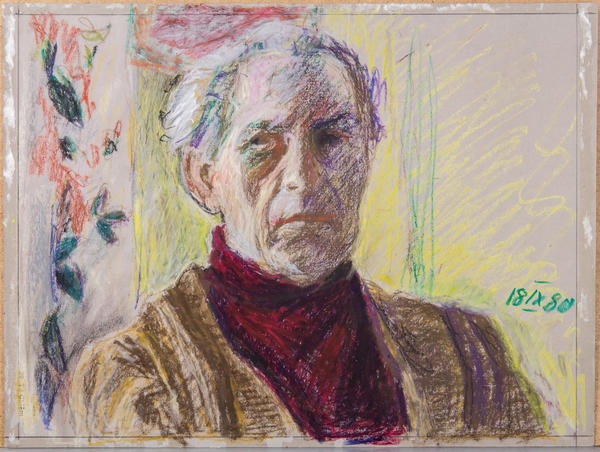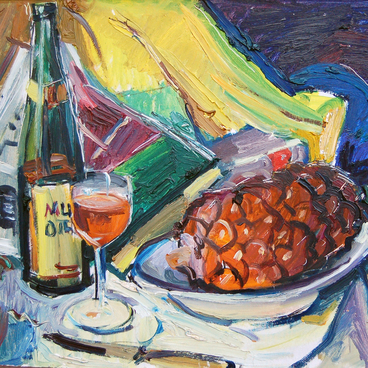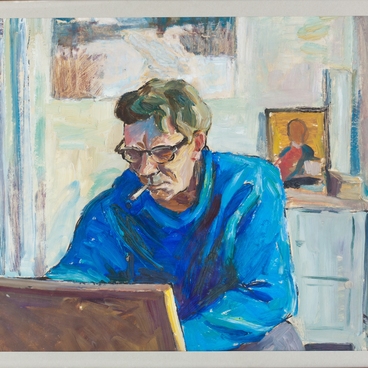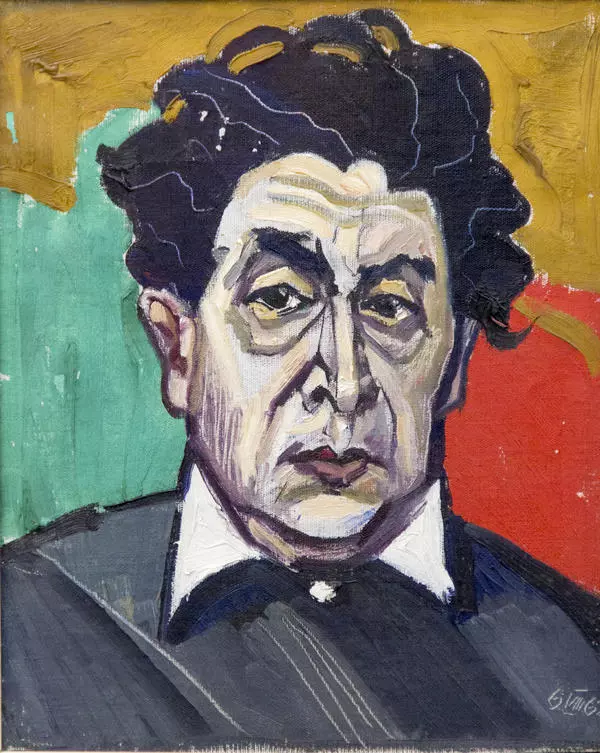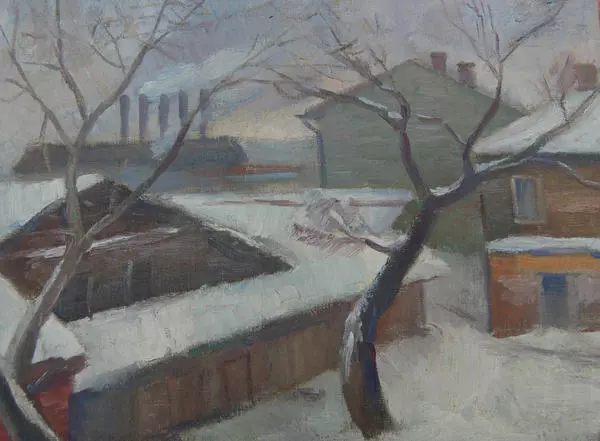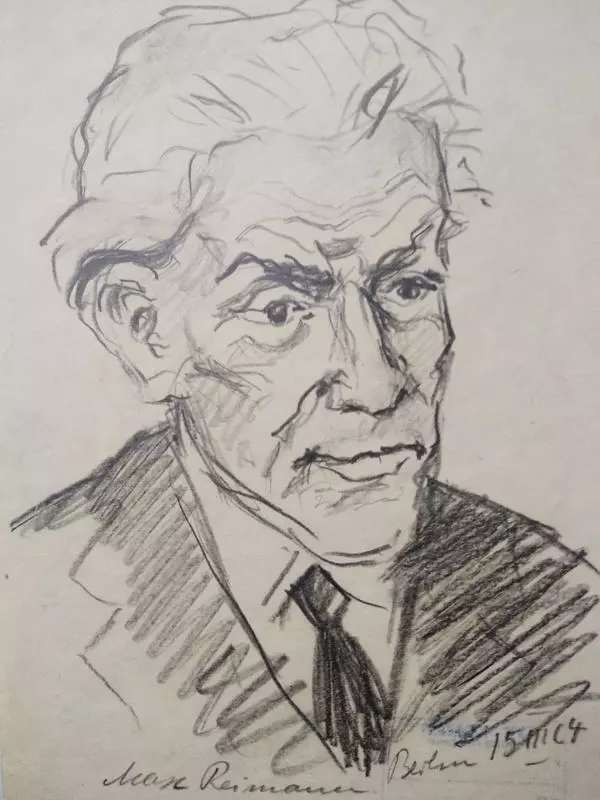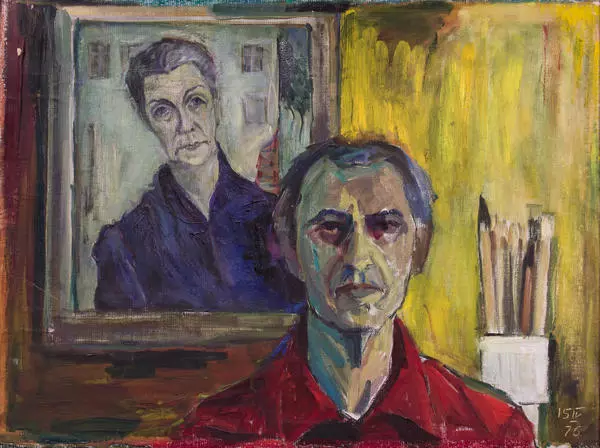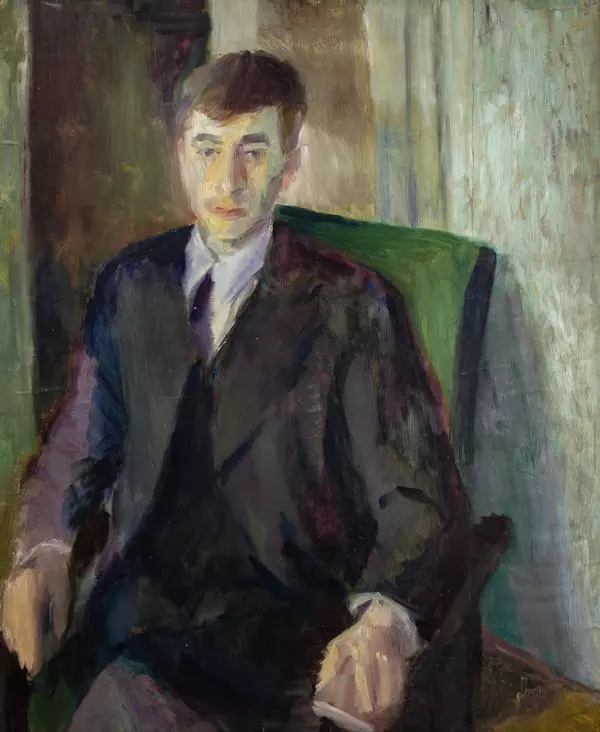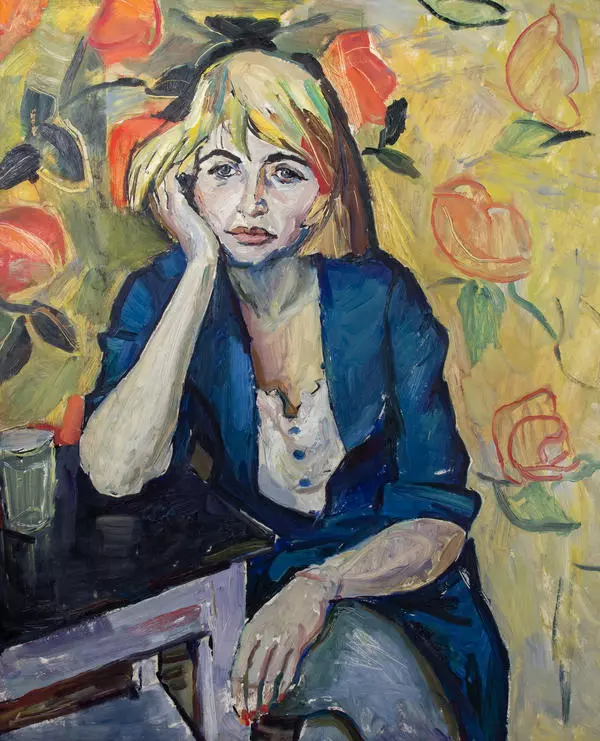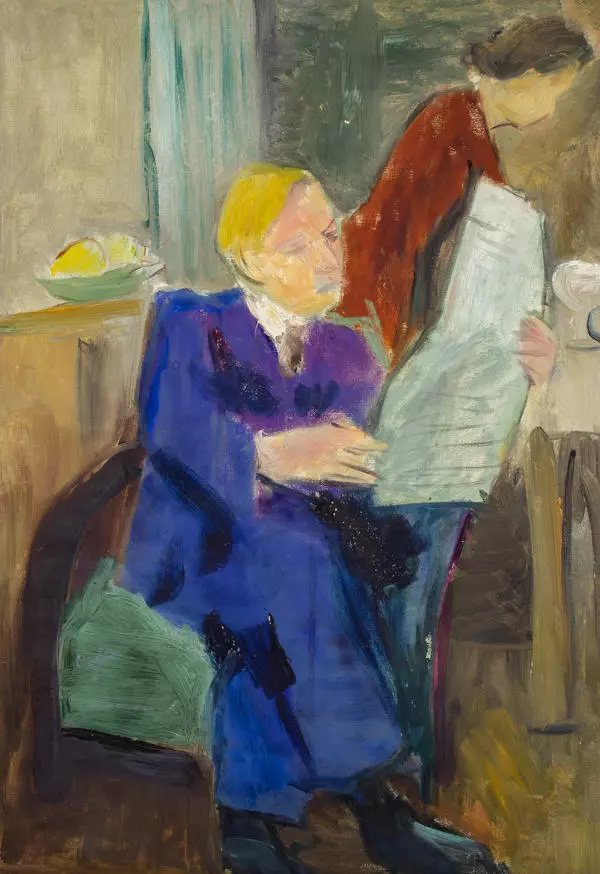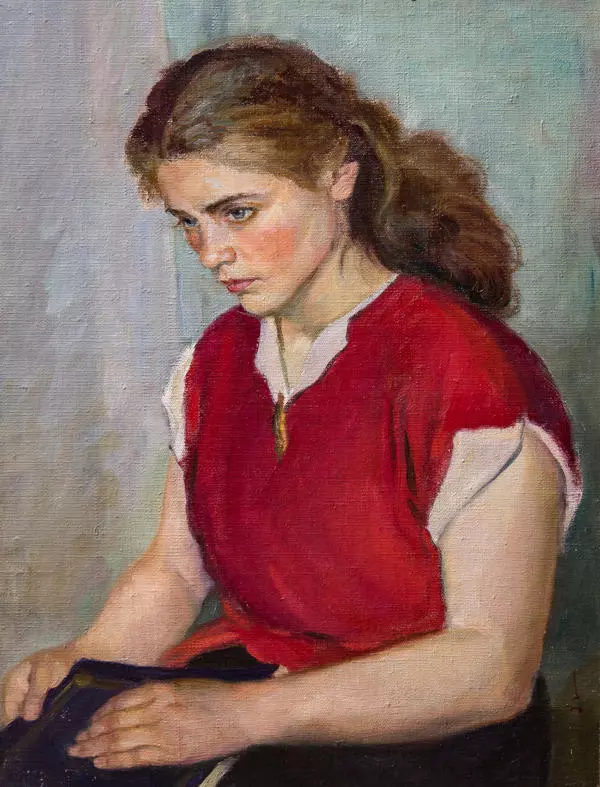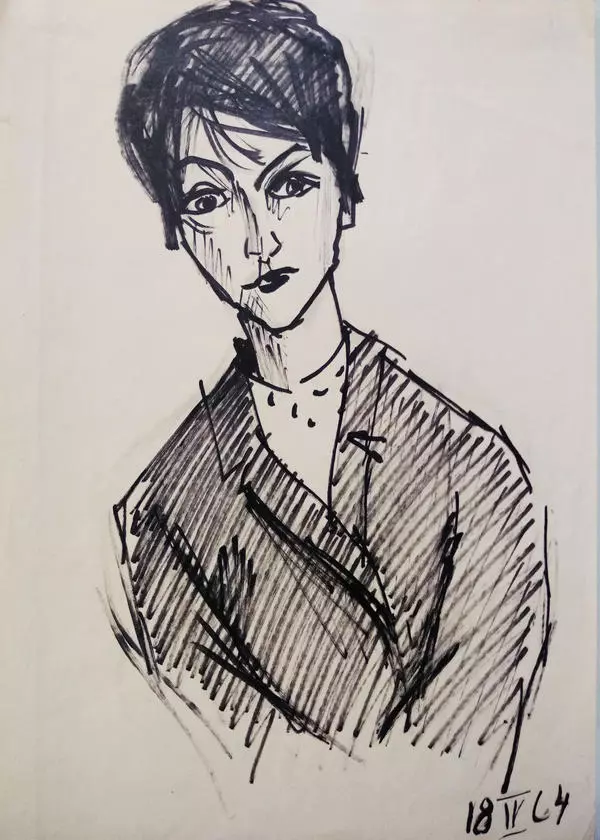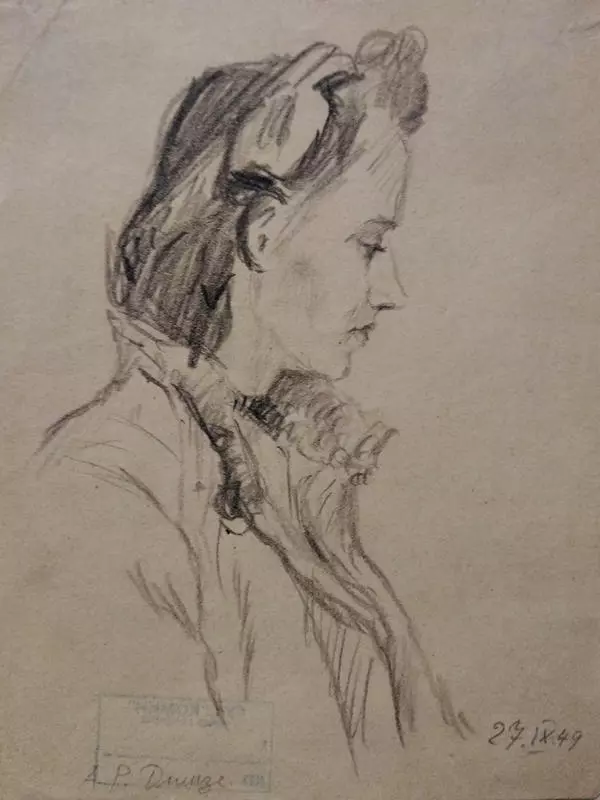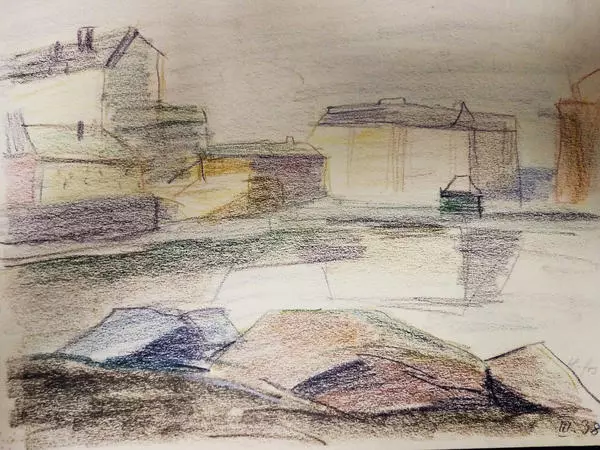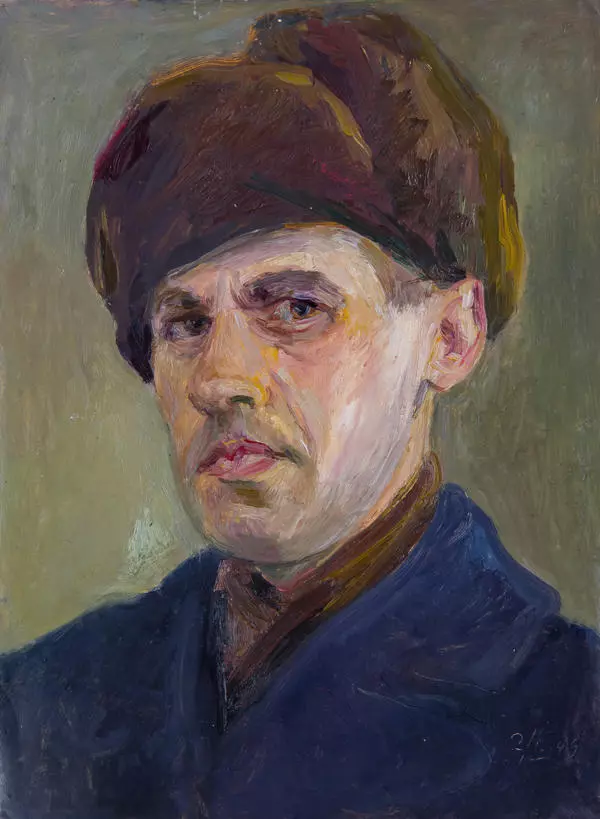The Self-portrait by Jurgis Preiss, painted in 1980 is the last completed one. The painting belongs to the longest period of work of the master, which art historians call the Kemerovo period. It lasted from 1956 to 1984.
The Kemerovo period is the time when Preiss returned to light and bright colors, small genres and free strokes. The artist painted a gallery of self-portraits, in which he reflected his memories, personal impressions and associations. According to critics, these autobiographical works can be singled out into a separate genre - the author’s personal diary.
The self-portrait of 1980 is painted in the technique of oil pastels. The artist stands at the window, his face is drawn in the backlight exposure - the side light falls from behind. Because of this, the outlines of the face are blurred: the relief is vague, the pit on the cheek and the skin fold at the mouth are visible. A deep direct look conveys fatigue and sorrow, resilience and will, suffering and dignity. Despite the tragedy, which is guessed in the expression of the artist’s face, the work is full of pure bright shades. The master depicted himself in a dark-red sweater, drew sunlight with yellow pastel paint, outlined a plant pattern on the curtain with green and coral colors. Bright colors do not conflict with the main image, they only supplement its deep meaning.
In the Kemerovo catalogue of the personal exhibition of 1974 there is a quotation from the artist himself about how he saw his work: ‘In my early childhood I drew a lot. At fifteen I became a student of the Academy of Arts <…> soon switched to the life models. In this way, through drawing, step by step, I came to painting. Painting, exposure of life is a hard work. While you are painting, you may think: everything goes allright, and then you see that it is not that, not alive. Every time there are doubts, struggle with material, with time. Again and again, one must start and believe that the next work will be more successful. And so it goes on day after day, and I want to say to people: “Look at the life! It is worth living!”
The Self-portrait got into the collection of the Kemerovo Regional Museum of Fine Arts in 1991. It was handed over by Lyudmila Biryukova, Preiss' adopted daughter and his heiress.
The Kemerovo period is the time when Preiss returned to light and bright colors, small genres and free strokes. The artist painted a gallery of self-portraits, in which he reflected his memories, personal impressions and associations. According to critics, these autobiographical works can be singled out into a separate genre - the author’s personal diary.
The self-portrait of 1980 is painted in the technique of oil pastels. The artist stands at the window, his face is drawn in the backlight exposure - the side light falls from behind. Because of this, the outlines of the face are blurred: the relief is vague, the pit on the cheek and the skin fold at the mouth are visible. A deep direct look conveys fatigue and sorrow, resilience and will, suffering and dignity. Despite the tragedy, which is guessed in the expression of the artist’s face, the work is full of pure bright shades. The master depicted himself in a dark-red sweater, drew sunlight with yellow pastel paint, outlined a plant pattern on the curtain with green and coral colors. Bright colors do not conflict with the main image, they only supplement its deep meaning.
In the Kemerovo catalogue of the personal exhibition of 1974 there is a quotation from the artist himself about how he saw his work: ‘In my early childhood I drew a lot. At fifteen I became a student of the Academy of Arts <…> soon switched to the life models. In this way, through drawing, step by step, I came to painting. Painting, exposure of life is a hard work. While you are painting, you may think: everything goes allright, and then you see that it is not that, not alive. Every time there are doubts, struggle with material, with time. Again and again, one must start and believe that the next work will be more successful. And so it goes on day after day, and I want to say to people: “Look at the life! It is worth living!”
The Self-portrait got into the collection of the Kemerovo Regional Museum of Fine Arts in 1991. It was handed over by Lyudmila Biryukova, Preiss' adopted daughter and his heiress.


